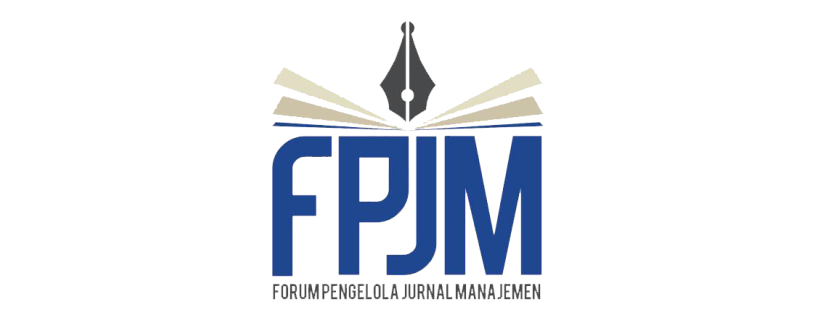Study of Bond Issuer Companies Listed on IDX and on PT Pefindo Rating List: The Effect of Financial and Non-Financial Factors on Bond Rating
DOI:
https://doi.org/10.26905/jmdk.v10i2.9107Keywords:
Bond Rating, Bond Securities, Leverage, Liquidity, Maturity, ProfitabilityAbstract
The aim of this study is to determine the effect of liquidity, leverage, profitability, bond securities, and maturity variables on bond ratings of entities that issue bonds on the Indonesia Stock Exchange and PT Pefindo's rating list for the period 2019 - 2021. The objects used in this study are all bond issuer companies that have been recorded in PT Pefindo and have complete financial reports on the Indonesia Stock Exchange for 2019 - 2021. There are 11 bond issuer companies used as samples with 3 years of observation so that a sample of 33 is obtained. Sampling is determined by using a purposive sampling, while the insightful strategy utilized is calculated relapse examination. The result shows that liquidity (CR), leverage (DER), profitability (ROA), bond securities and maturity affect on the bond rating. This shows that liquidity, leverage, profitability, bond securities, and maturity have an impact on bond ratings for bond issuer’s entities.
Downloads
References
Arisanti, I., Fadah, I., & Puspitasari, N. (2013). Analisis Faktor Keuangan Dan Non Keuangan Yang Mempengaruhi Prediksi Peringkat Obligasi Syariah (Studi Empiris Pada Perusahaan Penerbit Obligasi Syariah Yang Terdaftar Di Bursa Efek Indonesia Periode 2010-2012). Jurnal Ekonomi Akuntansi dan Manajemen, 13(2), 1-13
Burton, B. M. (1998). The Determinants of Credit Ratings in United Kingdom Insurance Industry. The Journal of Risk and Insurance. .
Fahmi, I. (2011). Analisis Laporan Keuangan. Bandung: Alfabeta.
Hafidania, R., & Hakiman, H. (2020). Determinants of bond rating (Case study on consumer finance companies of Indonesia Stock Exchange in 2018 period). Dinasti International Journal of Digital Business Management, 1(5), 670-679.
Joseph, R. V. (2002). Determining debt capacity. Commercial Lending Review, 9(2).
Kasmir. (2012). Analisis Laporan Keuangan. Jakarta: Rajawali.
Kurniawan, A. T., & Suwarti, T. (2017). Pengaruh profitabilitas, leverage, likuiditas dan produktifitas terhadap peringkat obligasi.
Magreta, M., & Nurmayanti, P. (2009). Faktor-faktor yang Mempengaruhi Prediksi Peringkat Obligasi ditinjau dari Faktor Akuntansi dan Non Akuntansi. Jurnal Bisnis dan Akuntansi, 11(3), 143-154.
Novita, N. (2018). Pengaruh Rasio Keuangan terhadap Peringkat Obligasi pada Perusahaan Non Keuangan di BEI Tahun 2013-2016. Jurnal Ekobis Dewantara, 1(1), 85-95.
Purwaningsih, A. (2008). Pemilihan Rasio Keuangan Terbaik untuk Memprediksi Peringkat Obligasi: Studi pada Perusahaan Manufaktur yang Terdaftar di BEJ. Jurnal Kinerja, 12(1),85-99.
Raharja. (2015). Perbandingan Alat Analisis (Diskriminan dan Regresi Logistik) terhadap Peringkat Obligasi (PT. PEFINDO). Jurnal Maksi, 8(1).
Sari, N. K. D. P., & Sudjarni, L. K. (2016). Pengaruh Likuiditas Obligasi, Waktu Jatuh Tempo, Dan Kupon Obligasi Terhadap Perubahan Harga Obligasi Korporasi Berperingkat Tinggi Di Bursa Efek Indonesia Doctoral Dissertation. Udayana University.
Sari, M. P. (2007). Kemampuan Rasio Keuangan sebagai Alat untuk Memprediksi Peringkat Obligasi (PT Pefindo). Jurnal Bisnis dan Ekonomi.
Siagian, E. (2016). Analisis Faktor Keuangan dan Non Keuangan yang Berpengaruh terhadap Peringkat Obligasi pada Perusahaan Manufaktur di Bursa Efek Indonesia.
Sufiyanti, F., & Wardani, D. K. (2016). Dampak Rasio Keuangan terhadap Peringkat Obligasi pada Perusahaan yang Terdaftar di Bursa Efek Indonesia.
Sumarto, S. (2010). Memprediksi Tingkat Obligasi Perusahaan Manufaktur yang Listing di BEI. Jurnal Mitra Ekonomi dan Manajemen Bisnis, 1(2).
Widowati, D., Nugrahanti, Y., & Kristanto, A. B. (2013). Analisis Faktor Keuangan dan Non Keuangan yang Berpengaruh pada Prediksi Peringkat Obligasi di Indonesia (Studi pada Perusahaan Non Keuangan yang Terdaftar si BEI dan di Daftar Peringkat PT Pefindo 2009-2011). Jurnal Manajemen Maranatha, 13(1), 35-54
https://doi.org/10.28932/jmm.v13i1.141
Wolk, H. I., & Tearney, M. G. (1997). Accounting theory: A conceptual and institutional approach.
Downloads
Published
Issue
Section
License
Authors who publish with this journal agree to the following terms:
(1)Â Copyright of the published articles will be transferred to the journal as the publisher of the manuscripts. Therefore, the author confirms that the copyright has been managed by the journal.
(2) Publisher of Jurnal Penelitian is University of Merdeka Malang.
(3) The copyright follows Creative Commons Attribution–ShareAlike License (CC BY SA): This license allows to Share — copy and redistribute the material in any medium or format, Adapt — remix, transform, and build upon the material, for any purpose, even commercially.












